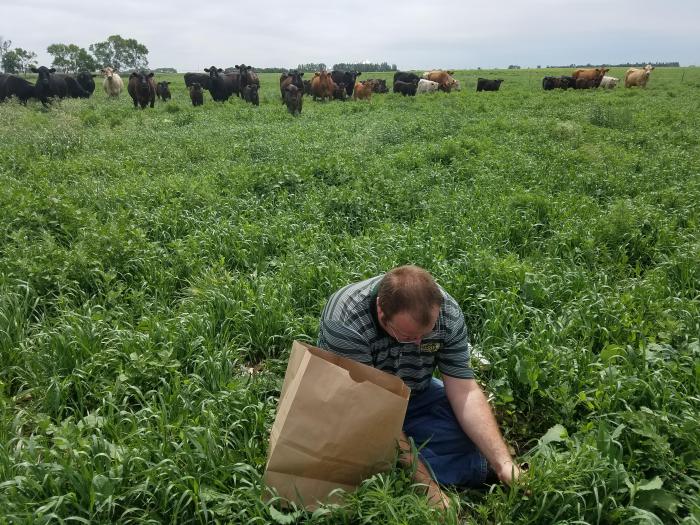CCSP Takes Conservation Projects Out to Farms, Ranches in Dickey County
Farmers in southeast North Dakota have the chance to do more than just learn about new conservation practices.
Loretta Sorensen is a writer from Yankton, S.D.
Thanks to a new mission for the Conservation Cropping Systems Project (CCSP) made possible by the USDA Natural Resources Conservation Service (NRCS), they now have a unique opportunity to adopt the practices on their farms.

“CCSP is going to help farmers answer their conservation questions by setting up small research areas on their cropland,” says Matt Olson, CCSP technician and 319 Watershed Coordinator, Forman, N.D.
CCSP was launched in 1999 with funding from the North Dakota Department of Health 319 Program, several southeast North Dakota Soil Conservation Districts, community sponsors and other sources. At that time CCSP board of directors, made up of 14 farmers from southeast North Dakota and northeast South Dakota, established a 130-acre research farm near Forman, ND. Over the past 18 years, the staff has experimented with no-till, strip-till, crop rotations and cover crops. Their work helped identify practical, successful conservation practices. But some field day visitors still wondered if the practices would really work on their farms. That has led to a new strategy for CCSP – to put conservation projects out on farms.
“Now, we work directly with farmers on four-year research projects, which they can maintain as long as they want because the project is set up on their land,” Olson says. “Instead of inviting farmers to see what we’ve done on 130 acres in the area, we work right alongside them on their operation.”
Also, CCSP is now able to integrate livestock into the demonstrations, something that wasn’t possible at the Forman site.
“The crux of our program is seeking out farmers with questions and working through CCSP to answer those questions,” Olson says. “What are farmers curious about? That’s the question we’re seeking to answer.”
First project
Last year, in the first project that was part of the new mission, CCSP helped a Dickey County, N.D. farmer set aside 50 acres of cropland and plant 30 acres of it into a diverse season-long cover crop. They divided the 30 acres into 5-acre paddocks and cattle grazed the 16-inch tall cover down to about 8-inches before being moved to a new paddock. On the remaining 20-acres, rye was flown onto the standing corn crop. They’ll compare the long-term difference between the two systems.
“We expect to implement two or three more of these types of on-farm research projects in 2018,” Olson says. “We know that manure increases soil organic matter and that there are significant microbiologic benefits in a system of cover crops and cattle.”
Full season cover crops can also provide a significant amount of forage. ”For a minimal cost, the covers can help take pressure off pastures during dry cycles,” Olson says.
Adoption is goal
CCSP’s main objective is to see farmers adopt effective conservation practices.
“That’s one of the most exciting things about CCSP,” Olson says. “We expect this program to have lasting benefits.”

